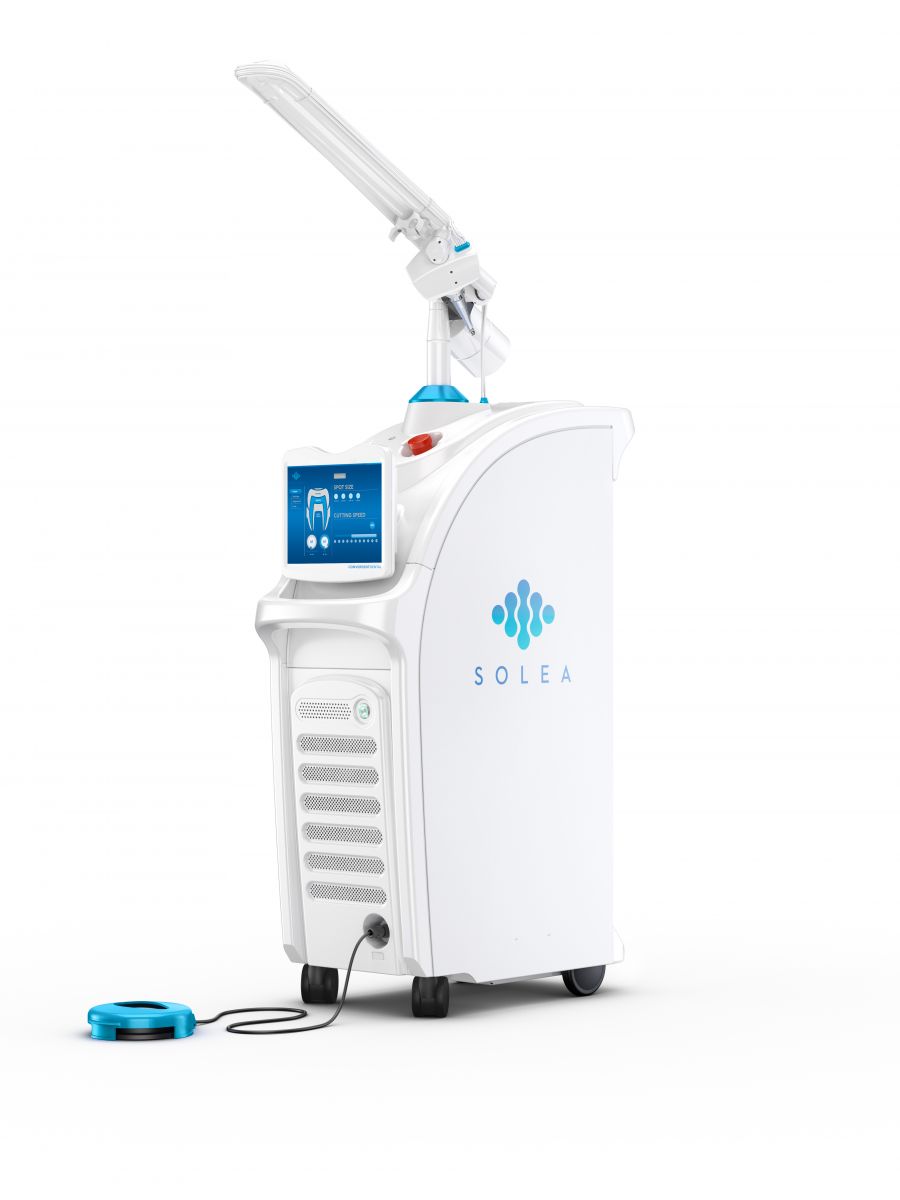Minimally Invasive Dentistry
The goal of Minimally Invasive Dentistry is to conserve healthy tooth structure. It focuses on prevention, remineralization and minimal dentist intervention where appropriate. Using scientific advances, Dr. Mozer can perform the least amount of dentistry needed while never removing more of the tooth structure than is required to restore teeth to their optimal condition. Minimally Invasive Dentistry uses long-lasting dental materials that conserve the maximum tooth structure so the need for future repairs is reduced.

Solea Dental Laser

Solea is a powerful dental laser that replaces the dental drill in the majority of procedures in our practice. It causes no vibration, noise or discomfort. The majority of hard and soft tissue procedures are completed with no anesthesia and soft tissue procedures are performed with virtually no bleeding. Patients are now able to receive the care they need in a fraction of the time that they were accustomed to with traditional drills. It is also far less invasive than using a traditional handpiece or surgical instruments, which makes healing time following a procedure much shorter.
|
How Does it Work First Dr. Mozer or Dr. Cuttler will evaluate your risk for tooth decay. Low dosage Digital x-rays are integral to generating a comprehensive approach to assessing the potential effectiveness of Minimally Invasive procedures and reducing the need for more extensive treatment. The presence of bacteria, quality and quantity of saliva, and your diet are all contributors to decay. Dr. Mozer and Dr. Cuttler will then suggest strategies to prevent or reduce your risk for tooth decay. For instance, if you have a high level of oral bacteria, you might be advised to use prescription strength mouthrinse daily, limit the intake of certain carbohydrates, and practice good oral hygiene.
|
Minimally Invasive Techniques
Remineralization
Remineralization is the process of restoring lost minerals to the tooth surface. Remineralization can repair the damage created by demineralization, which is the first step of the decay process. A prescription strength Fluoride toothpaste can play a very important role in Remineralization procedures.
Solea Dental Laser
Solea is a powerful dental laser that replaces the dental drill in the majority of procedures in our practice. It causes no vibration, noise or discomfort. The majority of hard and soft tissue procedures are completed with no anesthesia and soft tissue procedures are performed with virtually no bleeding. Patients are now able to receive the care they need in a fraction of the time that they were accustomed to with traditional drills. It is also far less invasive than using a traditional handpiece or surgical instruments, which makes healing time following a procedure much shorter.
Air Abrasion
When a tooth cannot be remineralized and decay is present, the doctors may decide to use Air Abrasion technology to remove the shallow decay. Air Abrasion is used instead of a traditional dental handpiece and generates no heat, sound, pressure or vibration. It resembles microscopic sand blasting and uses a stream of air combined with super-fine abrasive silicate particles to blast away the decay. A very small filling is then placed into the microscopic area to restore your tooth to health.
Sealants
Dental sealants protect the biting surfaces of teeth from bacteria that cause decay. Sealants are placed and bonded into the grooves and depressions of the tooth and act as a barrier protecting against acid and plaque. Sealants do not require any removal of tooth structure and can be placed on teeth that might be susceptible for decay at any time.
Single Visit Digital Inlays, Onlays and Crowns
Usually dentists use crowns to restore a severely broken down tooth, but inlays and onlays do not require the removal of as much of the remaining healthy tooth structure. Inlays are similar to fillings except that they are lab-fabricated to fit the cavity in your tooth and are the same color as the tooth. Onlays are used for more substantial tooth reconstruction and also do not require the removal of as much of the healthy tooth as would a crown. Our in-office single appointment CEREC system will create porcelain Inlays and Onlays in just a few minutes. They are then bonded in place to provide strength and support.
Bite Splints
Many people grind their teeth at night. Grinding, or bruxism, can cause serious damage to the teeth, and may cause increased nerve sensitivity that can require crown therapy to cover exposed areas. Grinding, which often begins in your teenage years or early twenties, can be detected and corrected before much damage has been done. Dr. Mozer and Dr. Cuttler can create a custom bite splint or a more conservative appliance called an NTI, for you to wear at night or during stressful times when teeth grinding most commonly occurs.